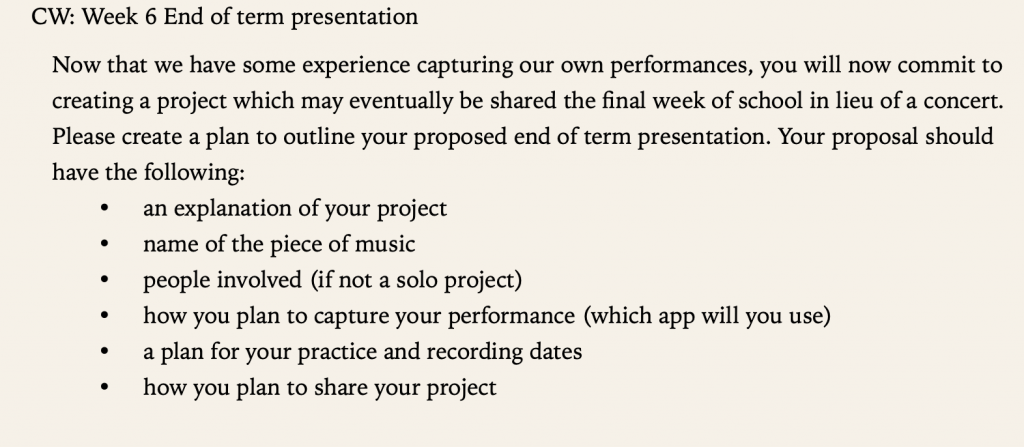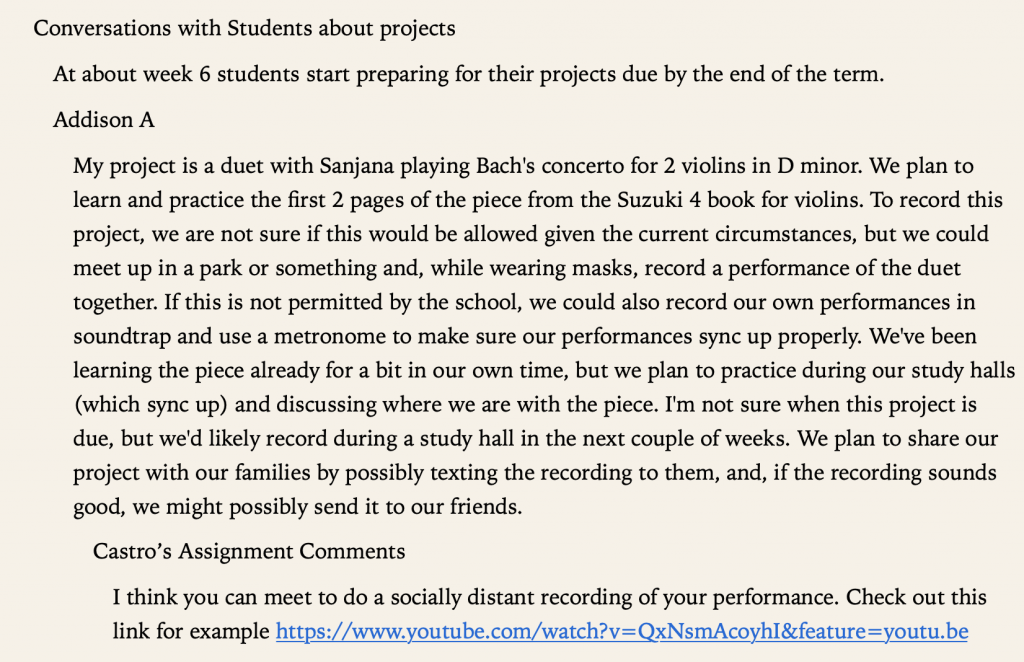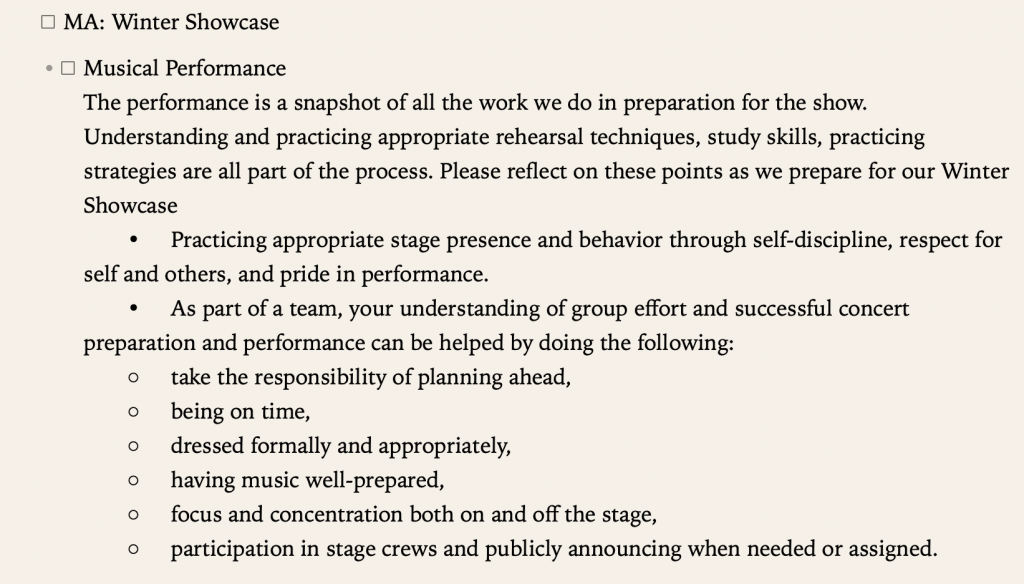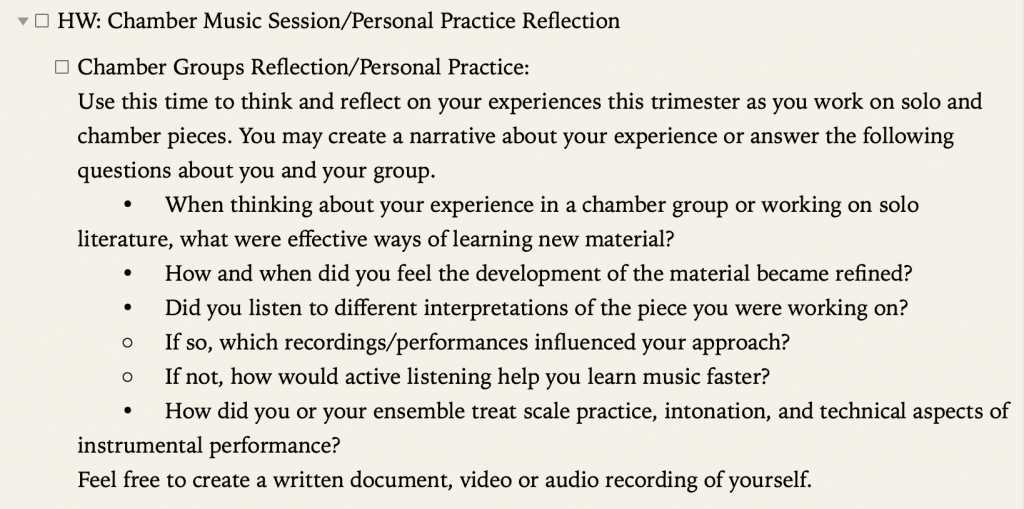Assessments are used and viewed in several ways by a music teacher. In my class, I use assessments to serve the classroom experience and aid in developing performance competency for presentations—the expectations and outcomes written in the syllabus. However, for a performing arts class, the most common assessment happens at the moment as a formative assessment of practice habits and tendencies as they occur. This type of in-the-moment assessment helps students with rhythmic accuracy, critical listening of intonation, active listening to help ensemble performance, and articulation.
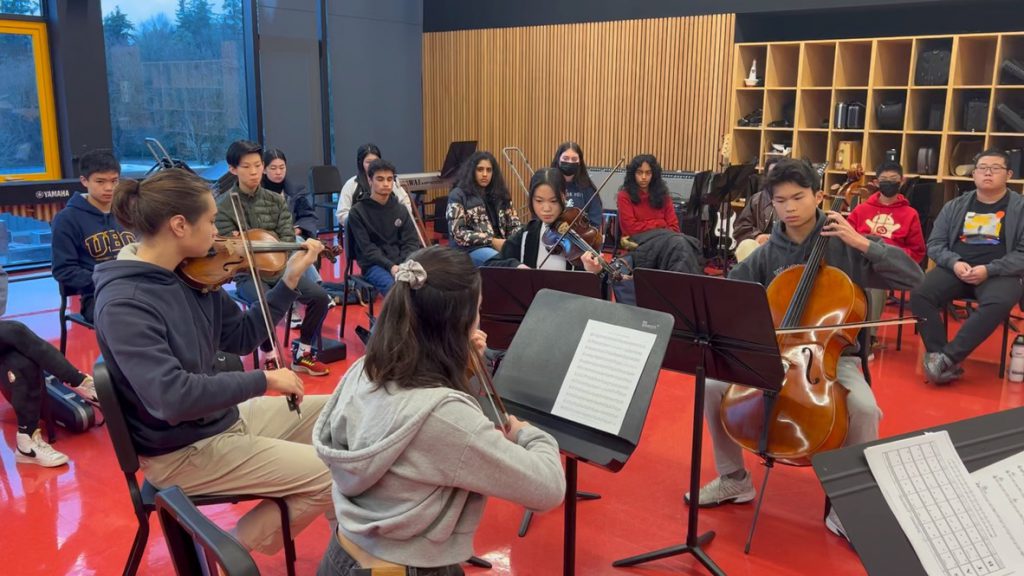
Additionally, formative assessments in my instrumental music classes help students improve their reading and interpreting of music notation. The bulk of the assessment in my class happens at the moment, through trial and error for students.
However, summative assessments are seen and heard by all who attend performances of my classes. Because of this structure, much of our class learning is captured through various written assignments. In addition, students are assessed through multiple forms of reflection, creation, and connection to any subject or musician we take time to study. The performance is not the beginning or the end of our assessment practice; it is simply part of the cycle of music education.
The following indicators help categorize the evidence for my work:
- Designs major assessments that reflect course outcomes and posts them at the start of each trimester
- Designs assignments to be graded and returned in a feedback cycle of seven calendar days
- Ensures the number of assignments in each course is neither excessive nor deficient–providing appropriate time for quality student performance and meaningful teacher feedback
(1) Designs major assessments that reflect course outcomes and post them at the start of each trimester
In my music classes, I take a holistic approach to designing major assessments that reflect course outcomes. For example, one of the central assessments in my classes is the end-of-term showcase musical performance. While the performance itself is important, I emphasize to my students that it is a snapshot of all the work we do in preparation for the show. This idea includes understanding and practicing appropriate rehearsal techniques, study skills, and practicing strategies. I also encourage my students to reflect on their experience in chamber groups or working on solo literature through personal practice reflection assignments. These reflections help students identify effective ways of learning new material, refine their development of the material, and develop their technical skills. By emphasizing both the performance and the reflection process, I aim to help my students better understand the course outcomes and how to apply them in their musical experiences. The examples below are from my lesson plans and an assignment from Canvas.
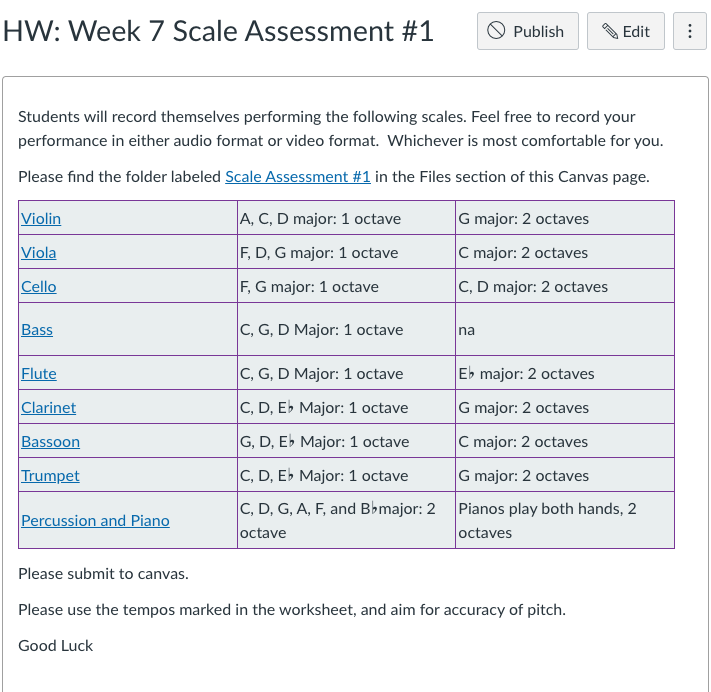
(2) Designs assignments to be graded and returned in a feedback cycle of seven calendar days
In designing assignments, I often think about the timeliness of returning helpful feedback to students to help their development. This strategy involves creating short tasks that allow students to focus on specific aspects of music education, such as music theory. After a brief discussion, students have a short time to complete the assignment, which is then returned with feedback to support their progress. Additionally, for performance assessments, students are given a self-assessment rubric for individual musicianship goals. These self-assessed rubrics provide insight into a student’s thoughts shortly after a performance assessment. Finally, for seating auditions in CME, students are also the adjudicators for their peers. They must fill out adjudication sheets for each of their peers as participants in a blind audition. Students receive their feedback upon learning of their seating placement.

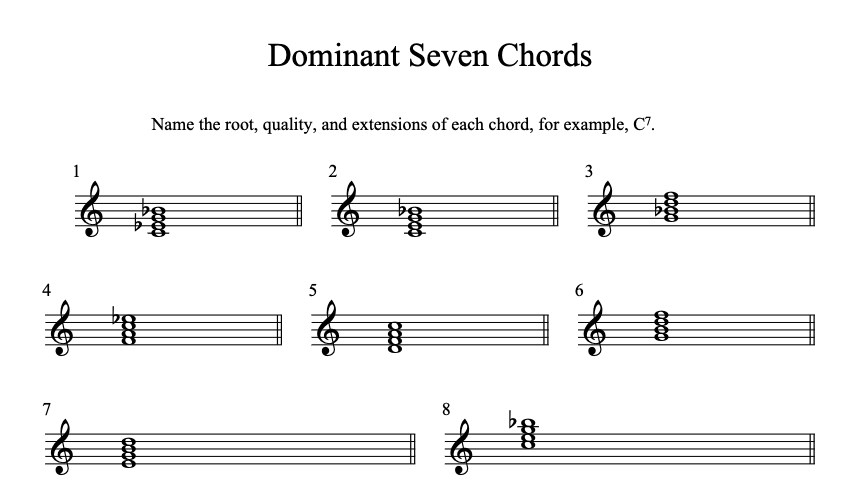
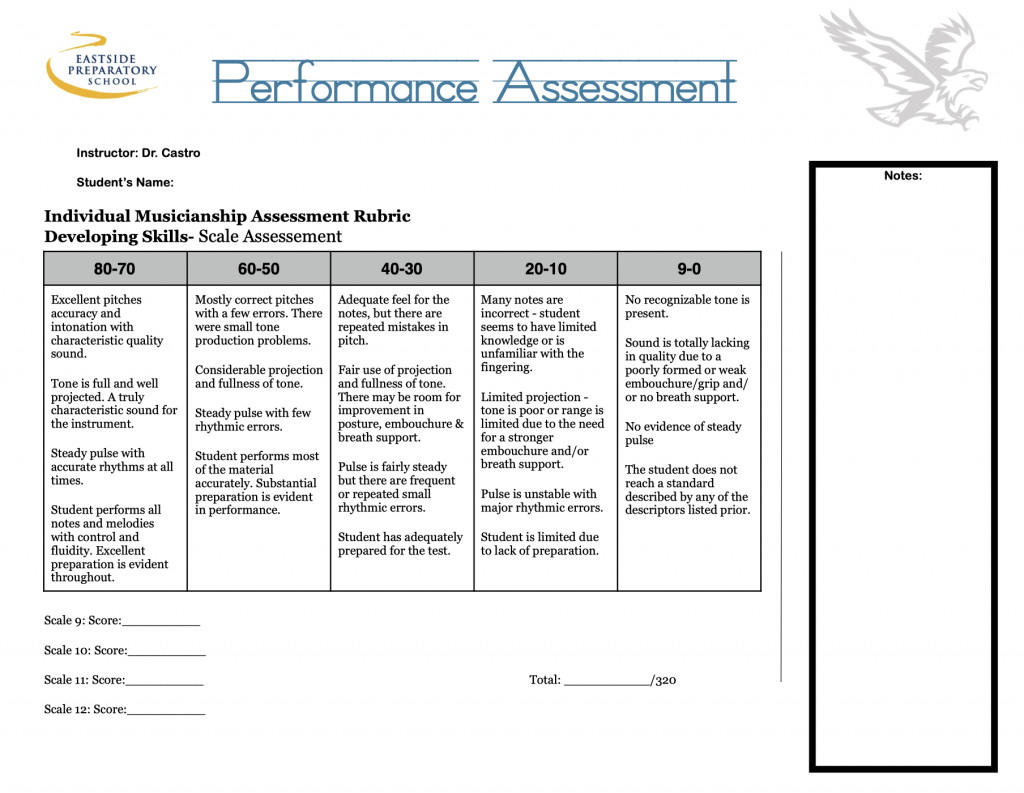
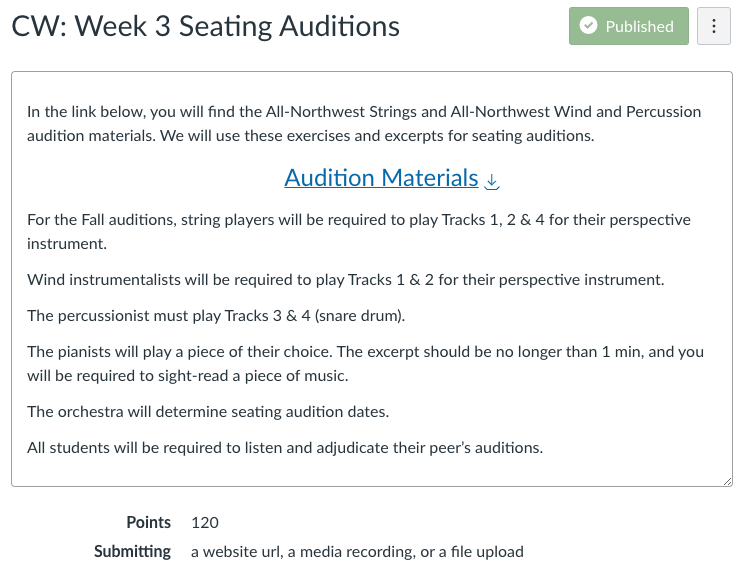
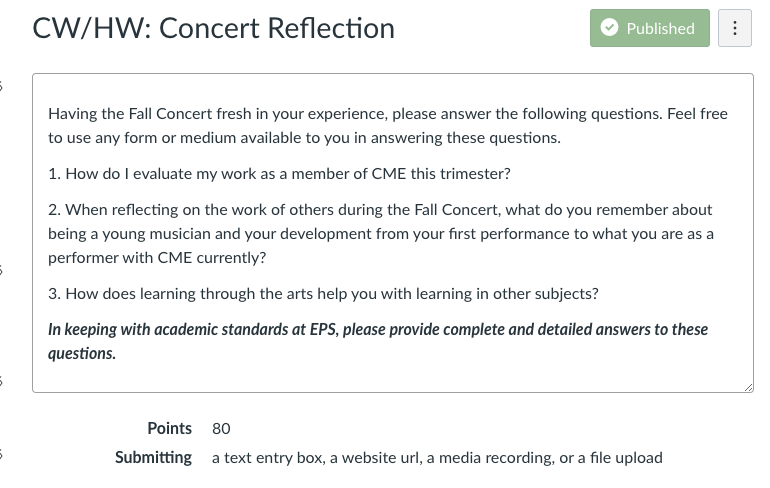
For more extensive projects, checklists and comments in Canvas assignments provide avenues for detailed feedback. Additionally, incorporating student reflections in both written and video formats allows for a more personalized learning experience that encourages students to take ownership of their development. The example below is my feedback to a student about their assignment.

(3) Ensures the number of assignments in each course is neither excessive nor deficient–providing appropriate time for quality student performance and meaningful teacher feedback
Ensuring the number of assignments is reasonable and sufficient is something we value in the performing arts. Because we have to balance skill building and content proficiency, I carefully consider the content that I want students to learn while also allowing them ample time to become more proficient in practicing their instruments. Most of the written work will typically occur towards the beginning of a term. As the trimester ends, we focus our attention on public performances. During this time, rehearsal becomes the most critical component and when the most important formative assessments take place. However, when students work on performance-based projects, planning for the performance becomes part of the assessment process. Ensuring that students receive quality feedback that helps them improve their skills is even more vital to their success. The following examples show the assignment, then the communication and feedback for students and subsequent performance.
